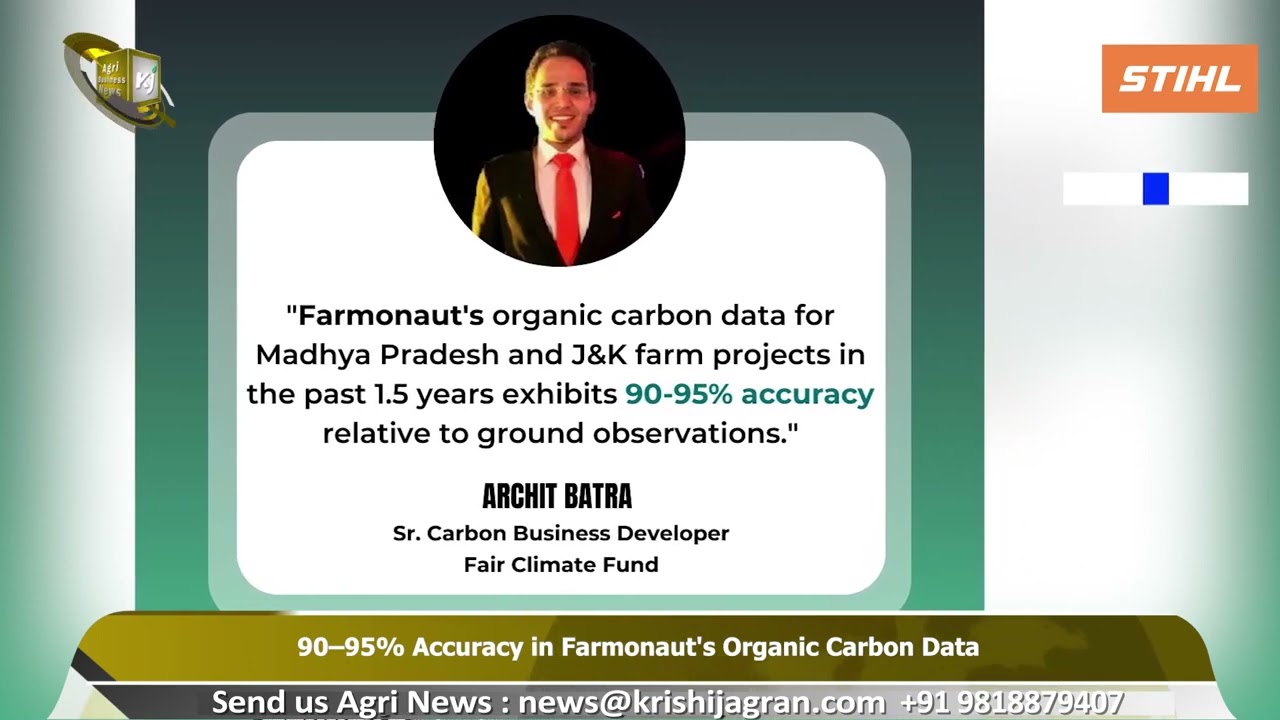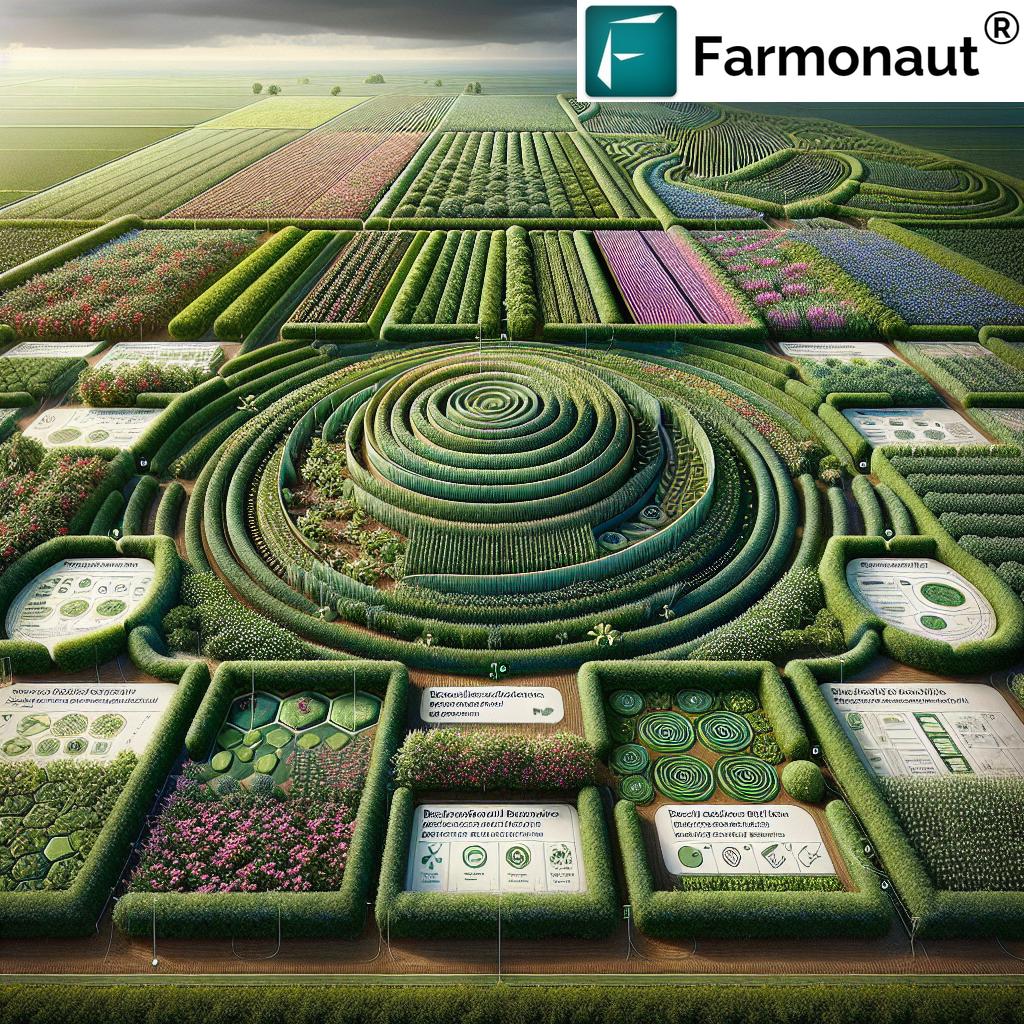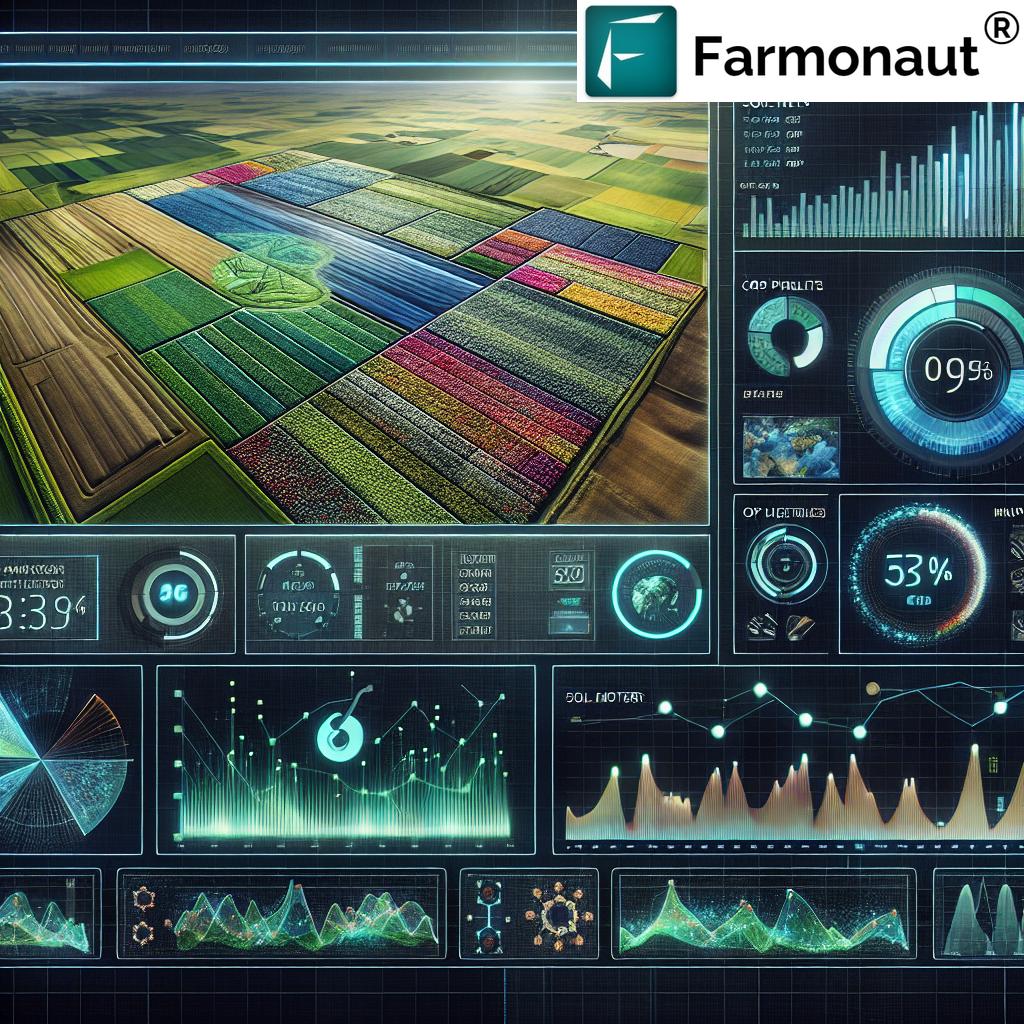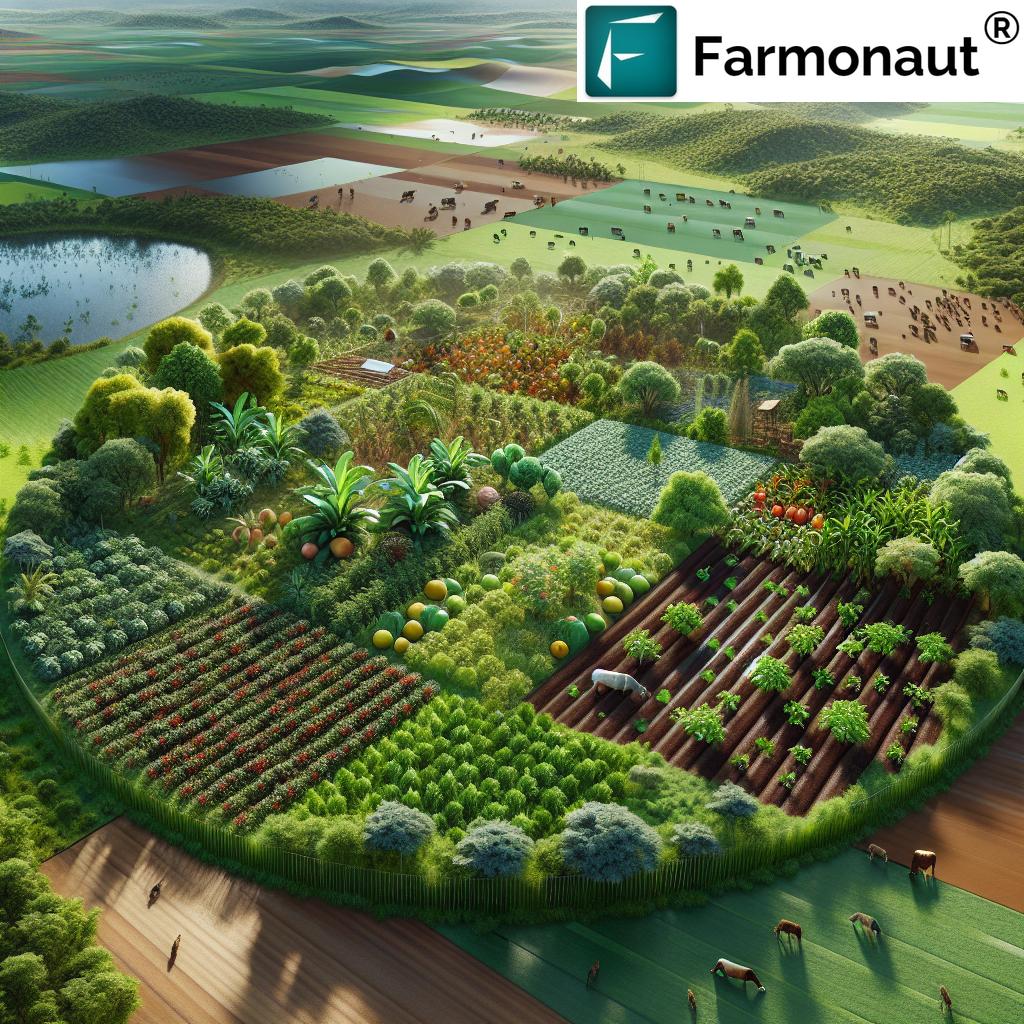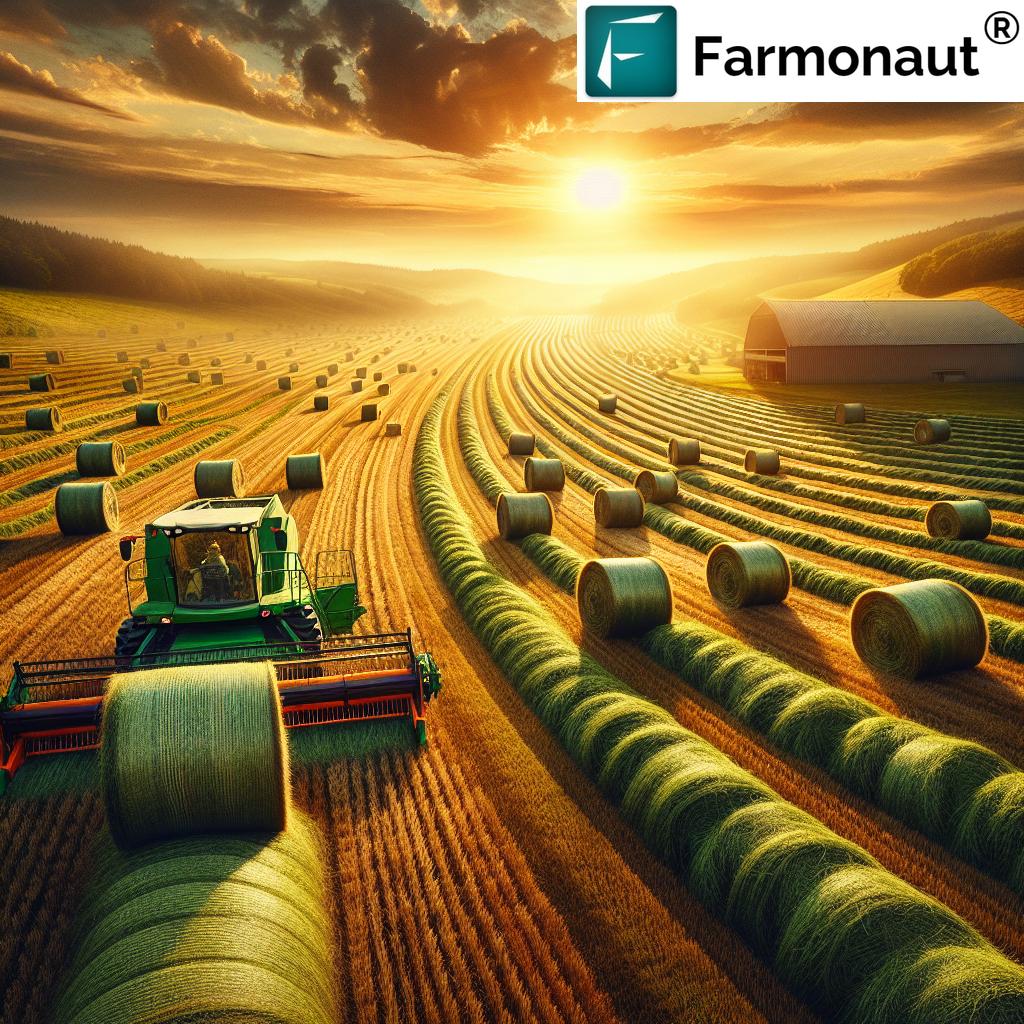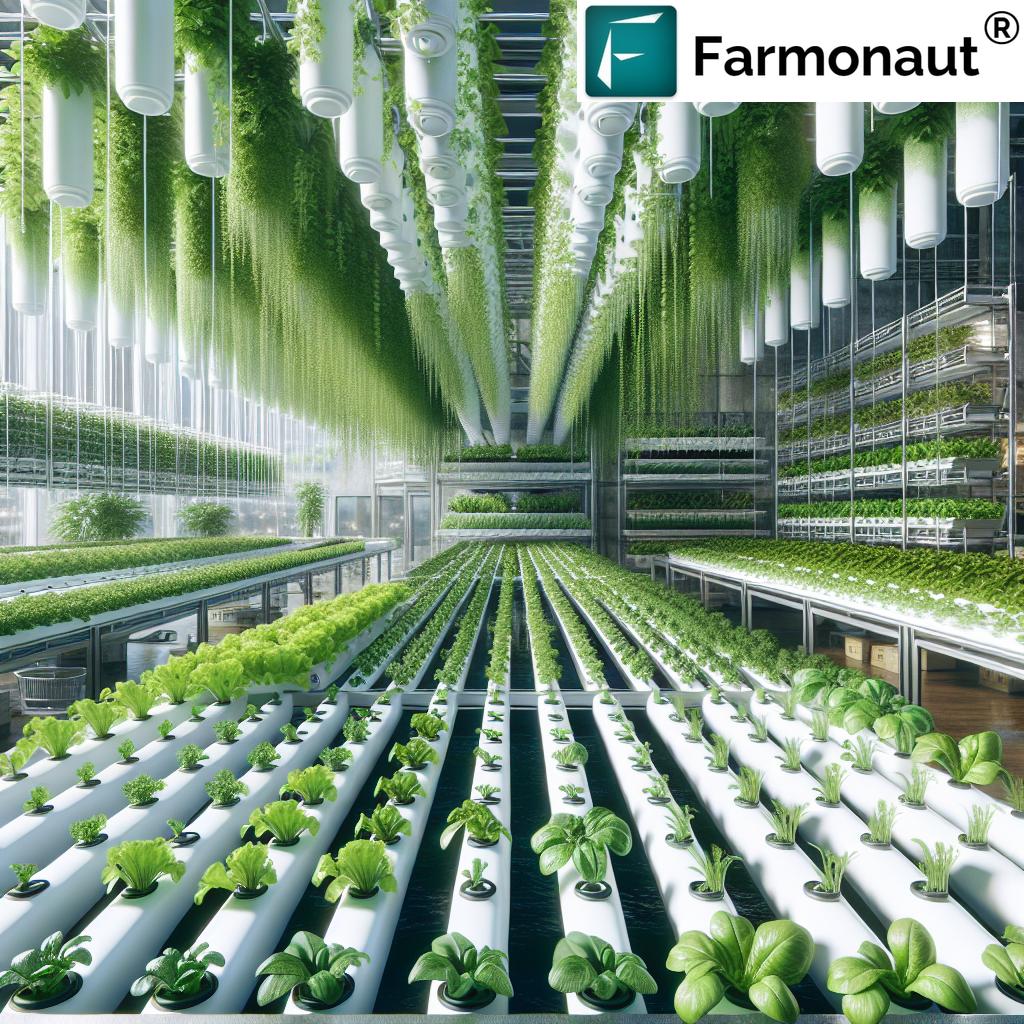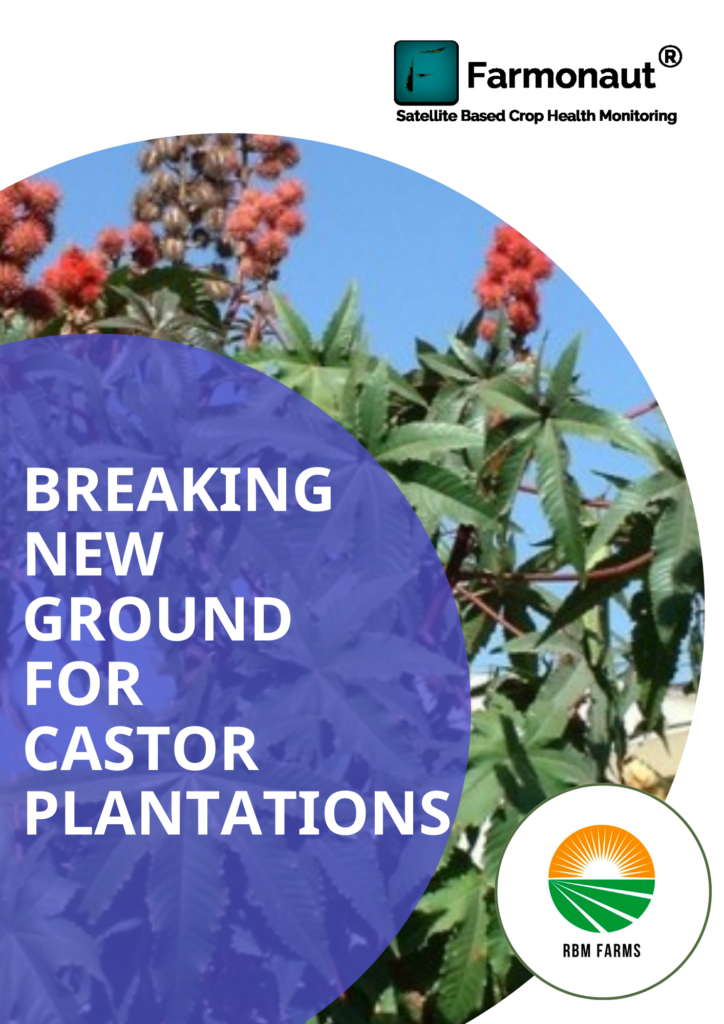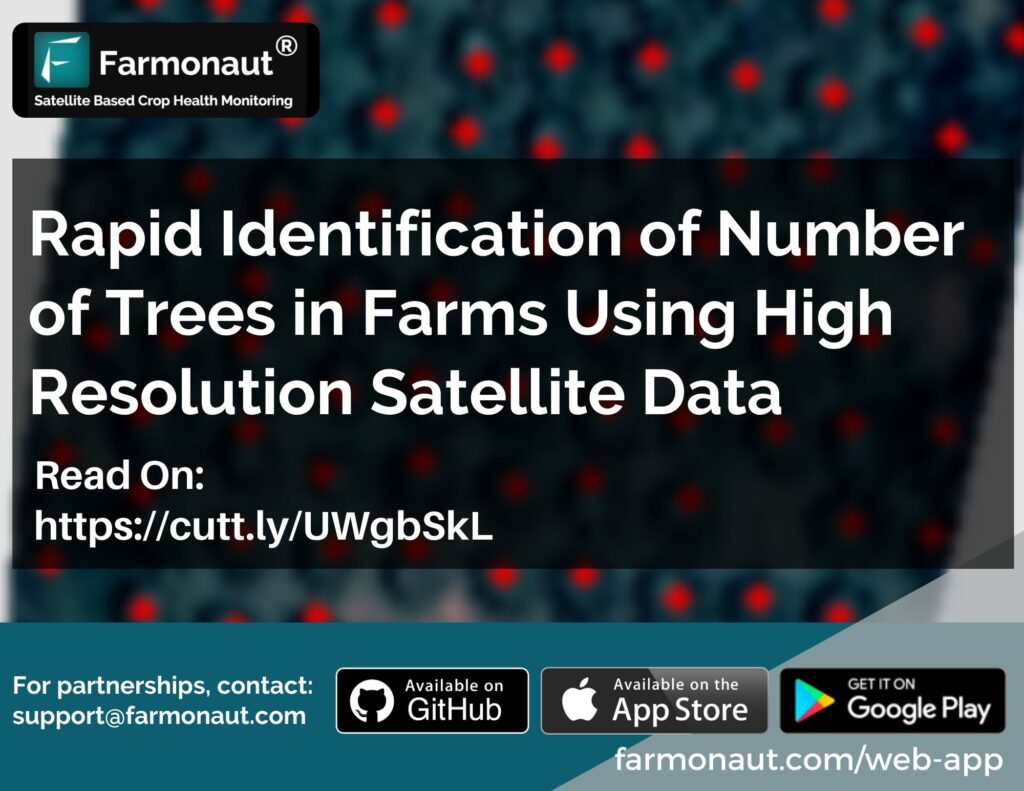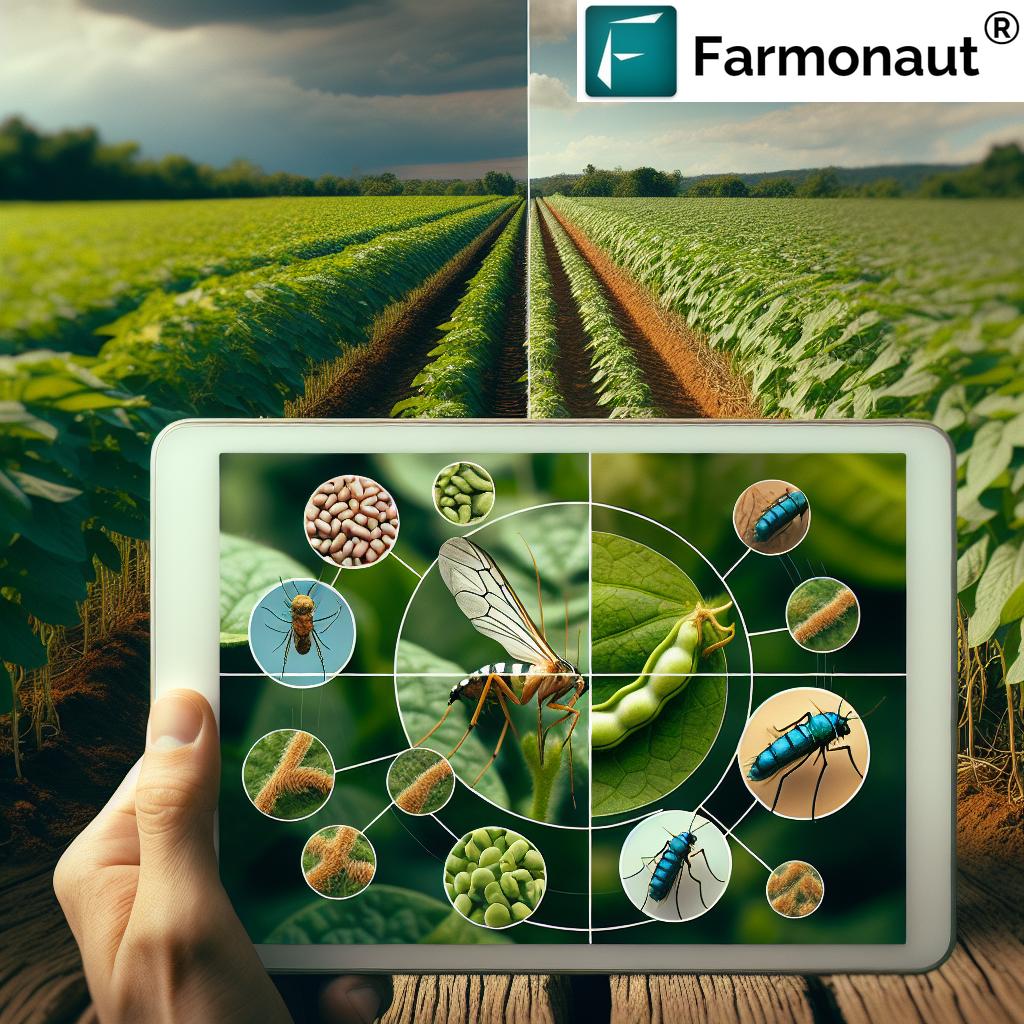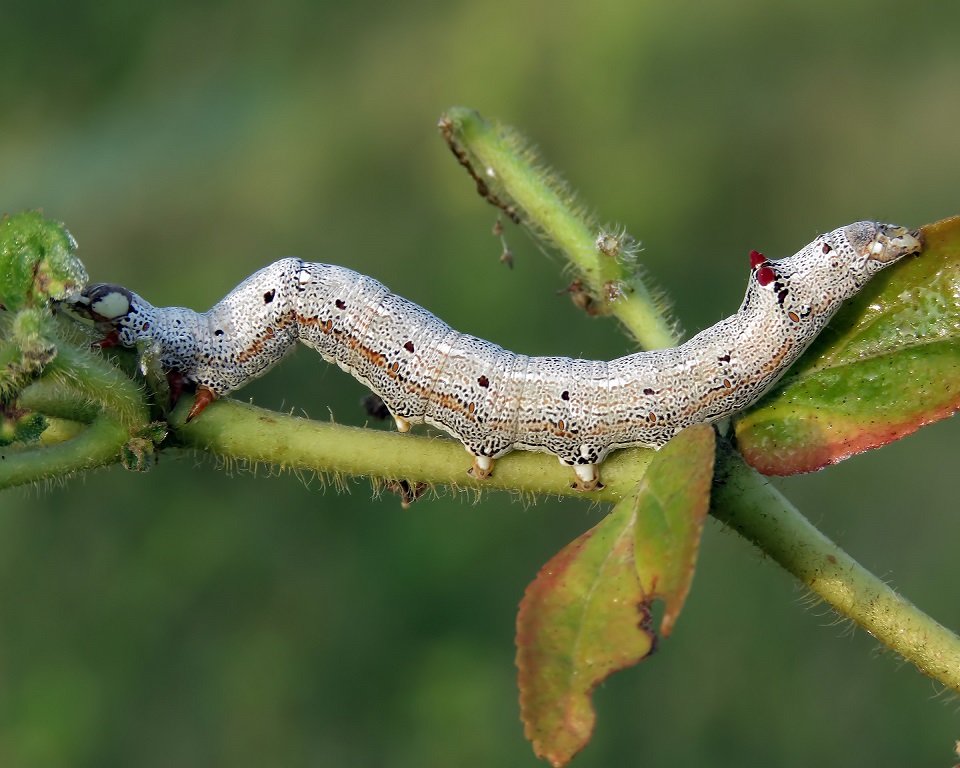Sustainable Agriculture and Organic Farming: 7 Benefits
“Sustainable agriculture can reduce soil erosion by up to 50% compared to conventional farming methods.”
Sustainable Agriculture and Organic Farming: A Pathway to Environmental Stewardship and Food Security
In today’s world, the conversation around food, climate change, and responsible stewardship of our natural resources is more essential than ever. As environmental degradation, resource scarcity, and the urgent need to ensure food security for future generations become pressing global concerns, it is clear that sustainable agriculture practices and organic farming methods offer a promising solution. These approaches not only prioritize environmental sustainability in agriculture but also pave the way for a more resilient and equitable food system.
We now witness a growing awareness among farmers, consumers, policymakers, and researchers about the significance of sustainable farming in balancing agricultural productivity with ecosystem health. This comprehensive blog will explore the definitions, advantages, challenges, and future directions of sustainability-focused strategies—shedding light on the transformative impact they can have on our environment, society, and economy.
Defining Sustainable Agriculture and Organic Farming
What is Sustainable Agriculture?
Sustainable agriculture is an integrated system that combines plant and animal production practices to meet current food needs without compromising the capacity of future generations to meet theirs. By focusing on the triple bottom line—environment, economy, and society—sustainable agriculture strives for:
- Conservation of resources: Efficient use of water, soil, and energy while minimizing waste and environmental degradation.
- Preservation of biodiversity: Promoting a variety of species to enhance ecosystem resilience.
- Economic viability: Ensuring farming is profitable and supports the livelihoods of farmers.
- Social equity: Upholding fair labor practices and strengthening community well-being.
Defining Organic Farming: A Cornerstone of Sustainability
Organic farming is a subset of sustainable agriculture. It emphasizes natural processes and materials while prohibiting synthetic fertilizers, pesticides, and GMOs (genetically modified organisms). Organic farmers employ crop rotation, composting, and biological pest control to improve soil health and minimize negative impacts on the environment.
The organic certification process—a regulatory mechanism to ensure standards—plays a vital role in building consumer trust in organic products. (More on this in the policy section.)
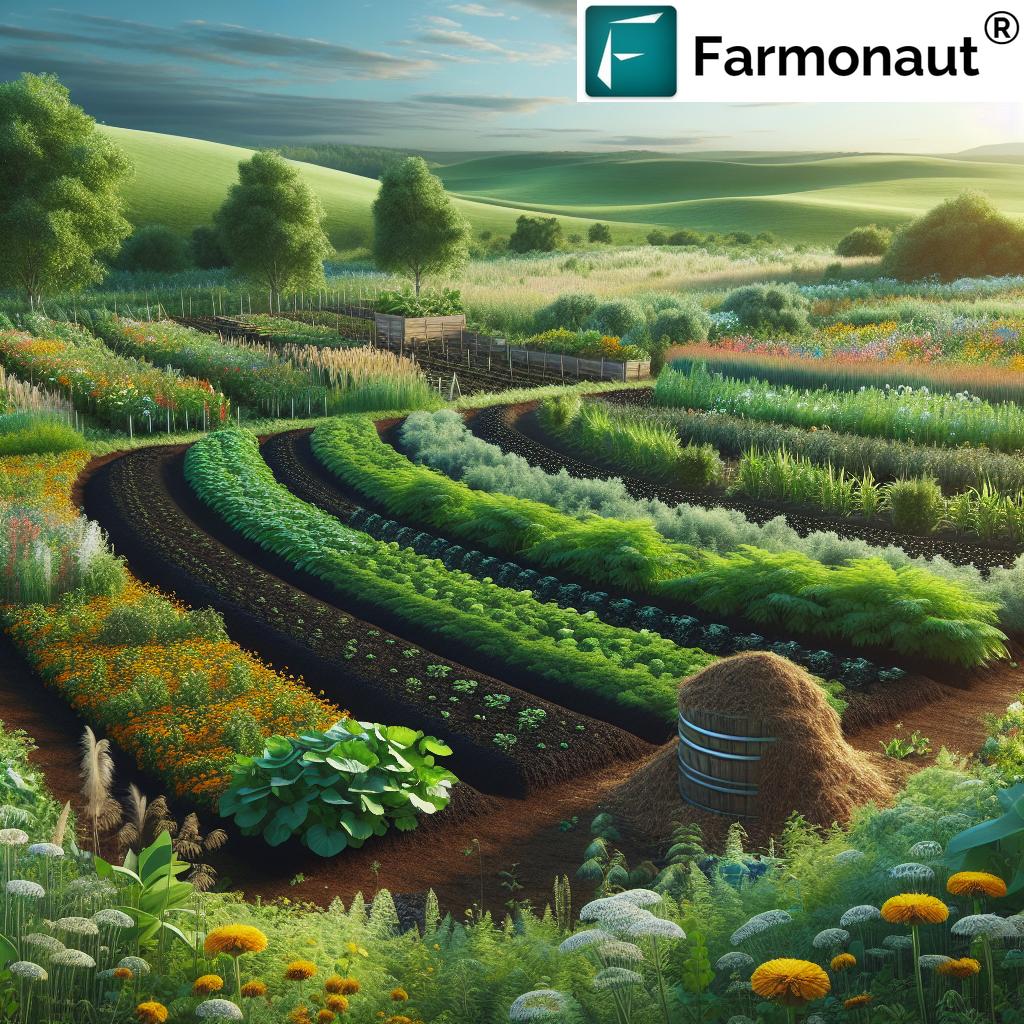
Why Combine Both Approaches?
Sustainable agriculture provides the overarching framework for sustainability in the food system, while organic farming methods offer the actionable, codified techniques to achieve this vision. Each practice supports soil health improvement, biodiversity in farming, and long-term ecological balance.
Comparative Table: 7 Benefits of Sustainable and Organic Farming
For a clearer perspective, here’s a comprehensive table outlining the seven major benefits of organic farming and sustainable agriculture.
| Benefit | Description | Estimated Environmental Impact | Estimated Yield Improvement (%) |
|---|---|---|---|
| Improved Soil Health | Boosts structure and fertility by increasing organic matter and beneficial organisms | Up to 20% more soil organic carbon; 40-50% less erosion | 5-20% increase in long-term productivity |
| Biodiversity Enhancement | Diverse crops and habitats support more organisms and ecosystem resilience | 30% higher species richness on organic/sustainable farms | Indirect benefit: improved pest control and resilience increases yield |
| Reduced Chemical Usage | Eliminates or significantly reduces synthetic fertilizers and pesticides | Up to 95% fewer chemical residues in soil and water | Long-term stability; may see initial drop but recover with soil health |
| Water Conservation | Improved soil retention and organic matter leads to greater water efficiency | 20-30% improved water retention and less irrigation needed | 5-10% increased yields in drought-prone areas |
| Lower Carbon Footprint | Reduced fossil fuel use, lower emissions, higher sequestration | 20-40% lower greenhouse gas emissions per unit area | Positive, especially with carbon credits and sustainable practices |
| Enhanced Food Quality | Reduced chemical residues; potential for higher nutrients | 60-90% less chemical residue in harvested produce | 5-15% better marketability and premium prices |
| Economic Viability | Higher market prices for organic; resilient, diversified income streams | Sustains farm communities and lowers risk of environmental fines | Organic is 2.7x to 3.8x more profitable, aided by price premiums |
In-Depth Analysis: The 7 Benefits of Sustainable Agriculture and Organic Farming
-
Improved Soil Health
Soil health improvement sits at the heart of sustainable and organic agriculture. Unlike conventional systems relying on synthetic fertilizers and heavy tillage, these practices focus on enhancing soil structure, promoting beneficial microorganisms, and increasing soil organic matter. The adoption of crop rotation, cover crops, and composting:
- Enhances nutrient cycling
- Boosts moisture retention and reduces the risk of erosion
- Improves resistance to drought
Sustainable methods can increase soil organic carbon by up to 20% and reduce soil erosion by 40–50%, leading to higher and more stable yields over time—critical for food security.
-
Biodiversity Enhancement
Biodiversity in farming is a defining characteristic of both sustainable and organic systems. By integrating multiple crop species, utilizing agroforestry, and supporting wildlife corridors, these farms sustain 30% higher species richness on average. This richer biodiversity:
- Improves natural biological pest control
- Promotes resilience against pests, diseases, and climate variability
- Fosters pollinator populations, essential for crop production
-
Reduced Chemical Usage
A core aspect of organic vs conventional farming is the near-elimination of synthetic fertilizers and pesticides within organic production. Sustainable systems emphasize integrated pest management (IPM), using a blend of biological, cultural, and physical methods to control pests.
- Organic practices can reduce chemical residues in soil and water by up to 95%
- Improves overall environmental health for both humans and ecosystems
-
Water Conservation
By enhancing soil structure and organic matter content, sustainable techniques boost the soil’s ability to retain moisture, lessening the need for irrigation. Practices like cover cropping, reduced tillage, and efficient irrigation management result in:
- 20–30% greater water retention capacity
- Less runoff and leaching—protecting aquifers and rivers
- Improved crop yields under drought or low rainfall conditions
-
Lower Carbon Footprint
Sustainable agriculture and organic farming play a vital role in reducing greenhouse gas emissions by:
- Using fewer synthetic inputs (which require energy-intensive production)
- Increasing soil carbon sequestration
- Adopting no-till or minimum tillage practices that decrease fossil fuel use
For organizations seeking to track and reduce their environmental impact, the Farmonaut Carbon Footprinting Solution offers real-time data and actionable insights for sustainability goals.
-
Enhanced Food Quality
Organic produce is sought after for its potential health benefits, including:
- 60–90% less chemical residue in harvested crops
- Potentially higher levels of antioxidants and micronutrients (as indicated by several studies)
These factors enhance marketability and contribute to consumers‘ perception of organic goods as safer and healthier.
-
Economic Viability
Although organic farms may face higher initial costs and sometimes lower yields, market demand and premium prices make them 2.7x to 3.8x more profitable than conventional models (according to US-based studies). Additionally, income is diversified through crop/livestock integration and value-added products. Risk is mitigated thanks to greater ecosystem resilience and compliance with upcoming environmental regulations.
“Organic farming uses 30% less energy per unit of crop yield than traditional agriculture.”
Key Organic Farming Methods & Sustainable Agriculture Practices
Organic farming methods and sustainable agriculture practices empower growers to improve yields while nurturing the planet:
- Crop Rotation: Alternating crops on the same land to disrupt pest cycles, diversify root systems, and restore nutrients.
- Composting: Recycling farm waste into biologically active fertilizer (organic matter), improving soil fertility and structure.
- Integrated Pest Management (IPM): Combining biological, mechanical, and minimal chemical methods to sustainably control pests.
- Conservation tillage: Reducing or eliminating soil disturbance to preserve structure, promote water retention, and limit erosion.
- Agroforestry: Integrating trees, shrubs, and crops/livestock on the same land to boost biodiversity, income, and resilience.
- Organic Mulching: Using straw, leaves, or crop residue to cover the soil, conserve moisture, suppress weeds, and feed soil life.
- Cover Cropping: Growing specific plants during off-seasons to improve soil health, fix nitrogen, and prevent erosion.
These methods exemplify environmental sustainability in agriculture by restoring natural cycles and systems.

Challenges And Considerations in Sustainable Agriculture & Organic Farming
Despite the substantial benefits of organic farming and eco-friendly agriculture, several challenges persist:
- Yield Gaps: Organic yields may be lower, especially in the initial years of transition, due to soil recovery and absence of quick-acting synthetic inputs.
- Transition Costs: The transition to organic farming involves training, new equipment, and a period where certification is required but higher prices are not yet received.
- Certification Complexity: The organic certification process can be cost-prohibitive and bureaucratic for smallholder farmers.
- Market Volatility: Organic market demand fluctuates with consumer confidence and economic cycles (as illustrated by declines in organic farmland in France in 2023).
- Pest and Disease Management: With limited chemical intervention, organic growers may face outbreaks not easily managed by existing methods.
- Access to Inputs: Natural fertilizers and biopesticides are not always locally available, and knowledge dissemination is sometimes lacking.
Much ongoing research aims to close these gaps through tailored programs and technology, including targeted precision farming, support for training, and policy aid.
Integrating Sustainable Practices in Conventional Farming Systems
Recognizing these barriers, many conventional farmers are adopting sustainable agriculture practices without immediately seeking full organic status. This hybrid approach—often called sustainable intensification—aims to increase food production while minimizing environmental impact.
Major strategies include:
- Integrated Pest Management (IPM): This method empowers farmers to minimize chemical use, employ biological predators, pheromone traps, and mechanical control, using chemicals only as a last resort.
- Conservation Tillage: Reduces disturbance, conserves moisture, and promotes carbon retention for better yields and ecosystem resilience.
- Precision Agriculture Solutions: Technologies such as satellite-based monitoring enable site-specific management of water, nutrients, and pest control for optimal efficiency and minimal waste.
- Agroforestry: Blends tree planting and cropping for improved biodiversity, microclimate regulation, and diversified farm income.
Such efforts pave the path for an accessible, gradual transition to organic farming and broader adoption of sustainability principles.
Technological Innovations: Satellite-based Solutions in Sustainable Agriculture
Technology is revolutionizing how farmers and agribusinesses improve productivity and sustainability. Advanced satellite-based monitoring and AI-driven advisory platforms allow for:
- Real-time Crop Health Monitoring: Detects issues like nutrient deficiency or pest outbreaks before visible damage, enabling timely, targeted action.
- Soil Moisture & Carbon Mapping: Precision insights help farmers manage irrigation, optimize yields, and increase soil organic carbon levels for better resilience.
- Resource Optimization: AI-powered analytics minimize resource wastage, reduce input costs, and advance environmental stewardship.
-
Supply Chain Traceability: Blockchain technology secures transparency, essential for organic and sustainable supply chains.
See how Farmonaut Traceability Tool can ensure product authenticity—visit our Traceability Page.
Farmonaut, as a technology-driven platform, makes these powerful capabilities accessible and affordable for all scales of agriculture. With apps for Android, iOS, and the web, as well as a robust Farmonaut Satellite & Weather API and Developer Documentation, we empower farmers and agribusinesses to achieve greater precision and sustainability in their operations.
For large commercial operations and institutions, Farmonaut’s Large-Scale Farm Management App streamlines data collection, reporting, and decision-making across multiple locations.
And, for producers and buyers concerned about lending and insurance risks, our Crop Loan & Insurance Solutions use satellite verification to facilitate secure transactions.
Policy, Support Mechanisms, and the Organic Certification Process
Government policies and institutional support are pivotal in accelerating the adoption of sustainable agriculture practices, especially in lower-income regions. The most effective mechanisms include:
- Subsidies and Incentives: Covering transition and certification costs to encourage more farmers to enter the sustainable and organic markets.
- Research and Extension Programs: Disseminating the latest science-driven agronomy for improved yield, soil health improvement, and pest management.
- Market Access: Supporting market development and export opportunities, along with consumer education and protection standards.
Understanding the Organic Certification Process
The organic certification process ensures that products labeled “organic” adhere to specific rules and quality standards:
- Conversion Period: A minimum period (usually 2–3 years) during which land must be managed organically before produce can be sold as organic.
- Input Controls: Documentation of sources and uses of fertilizers, pest control methods, and materials.
- Inspections and Records: Annual on-site inspections and maintenance of detailed records by certified authorities.
- Certification and Labeling: Only after passing inspection and review can a farm or company use certified organic labels.
Rigorous certification builds trust with global consumers, sustains premium prices, and elevates brand value.
The Future of Eco-Friendly Farming: Research, Consumer Trends, and Global Impact
The trajectory of sustainable agriculture practices and organic farming methods will undoubtedly influence food security, ecosystem health, and climate resilience for generations to come. Key drivers for the next decade include:
- Research and Innovation: Ongoing studies into drought-resistant crops, bio-based pest management, and advanced soil carbon sequestration will help close yield gaps and scale sustainable solutions globally.
- Consumer Education and Demand: As consumers understand more about food origins and environmental impact, informed purchasing decisions will drive further demand for organic and eco-labeled products.
- Market and Policy Collaboration: Developing integrated platforms for education, certification, and traceability creates coherent support systems for farmers at every scale, especially in rapidly developing nations.
- Global Collaboration and Climate Action: Coordinated action is needed to meet the challenges of climate change, biodiversity loss, and declining soil fertility—areas where sustainable agriculture makes a transformative impact.
As a pioneering technology company, we at Farmonaut are committed to making these tools and insights accessible, scalable, and affordable for every farmer and agribusiness.
Frequently Asked Questions (FAQ)
What are the differences between organic and sustainable agriculture?
Organic farming is a subset of sustainable agriculture with strict guidelines banning synthetic fertilizers and pesticides, focusing on natural inputs. Sustainable agriculture is broader, encompassing environmental, social, and economic pillars—not all sustainable farms are organically certified, but all aim for long-term ecological balance.
What are the main steps in the organic certification process?
The process involves a transition period, strict input tracking, annual inspections, documentation, and compliance checks before organic labeling is granted. Certification builds market confidence and enables premium pricing.
Is organic farming profitable for smallholder farmers?
While initial costs can be higher and yields may dip during the transition, small farms often benefit from direct sales, premium markets, and diversified income—boosting long-term profitability and resilience.
Can conventional farmers adopt sustainable practices without going fully organic?
Absolutely. Many conventional farmers adopt integrated pest management, crop rotation, and conservation tillage as intermediate steps toward more sustainable systems.
What role does technology play in sustainable farming?
Satellite-based monitoring, AI-driven advisories, and traceability technologies help optimize resource use, enhance yields, reduce emissions, and increase supply chain transparency—making modern sustainable agriculture both practical and scalable.
Farmonaut Subscription Options
We make precision agriculture technology affordable and accessible to all. Explore our flexible subscription models below and empower your farm with satellite-based crop monitoring, AI advisories, and more.
Conclusion: Sustainability as a Pathway to Food Security
Sustainable agriculture and organic farming are no longer fringe concepts—they are the foundation for a new global approach to food, climate, and environmental stewardship. Through sustainable agriculture practices, organic farming methods, and the intelligent application of technology, we can restore soil health, promote biodiversity in farming, reduce chemical use, and create profitable, resilient farms for the future.
While challenges such as yield gaps, transition costs, and market volatility must be addressed, advances in science, policy, consumer support, and digital transformation are unlocking a brighter, more secure future for all. We encourage every farmer, agribusiness, and policymaker to explore, adapt, and invest in these eco-friendly approaches—ensuring a food system that supports people, profit, and the planet for generations to come.






